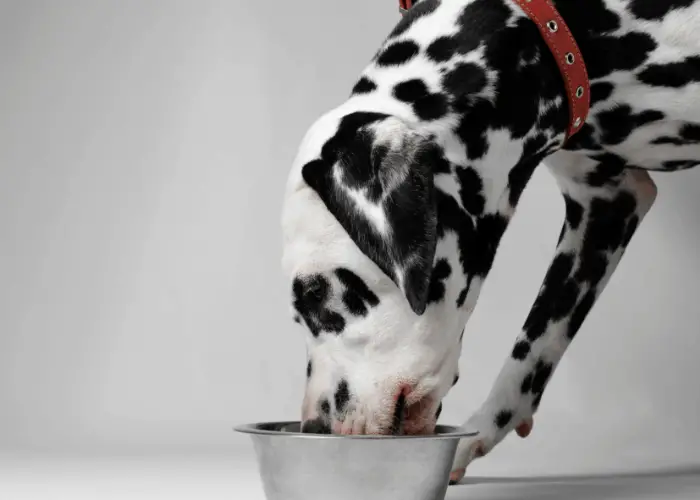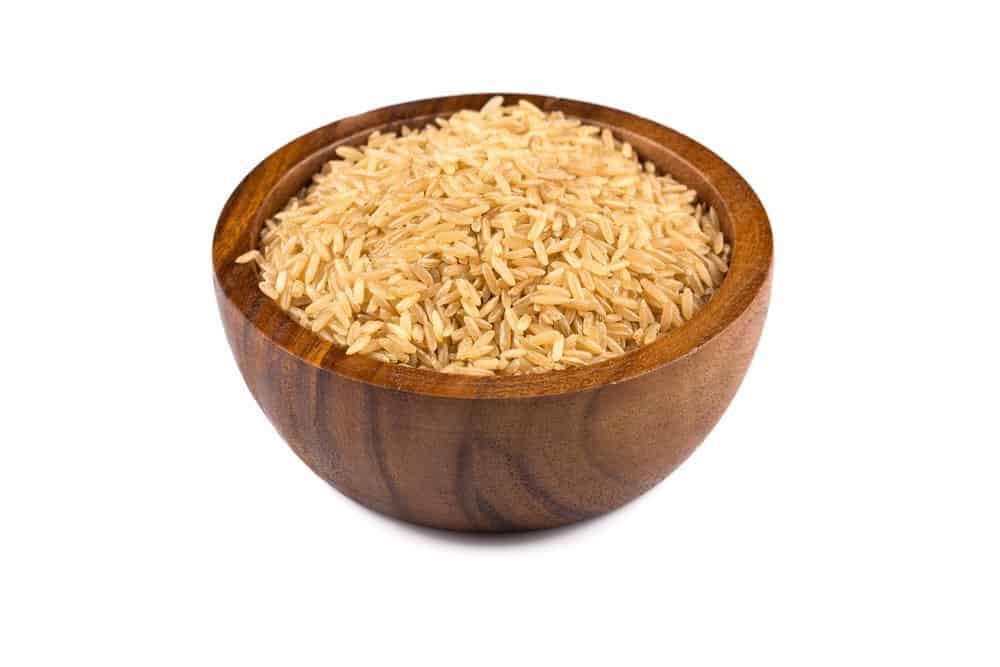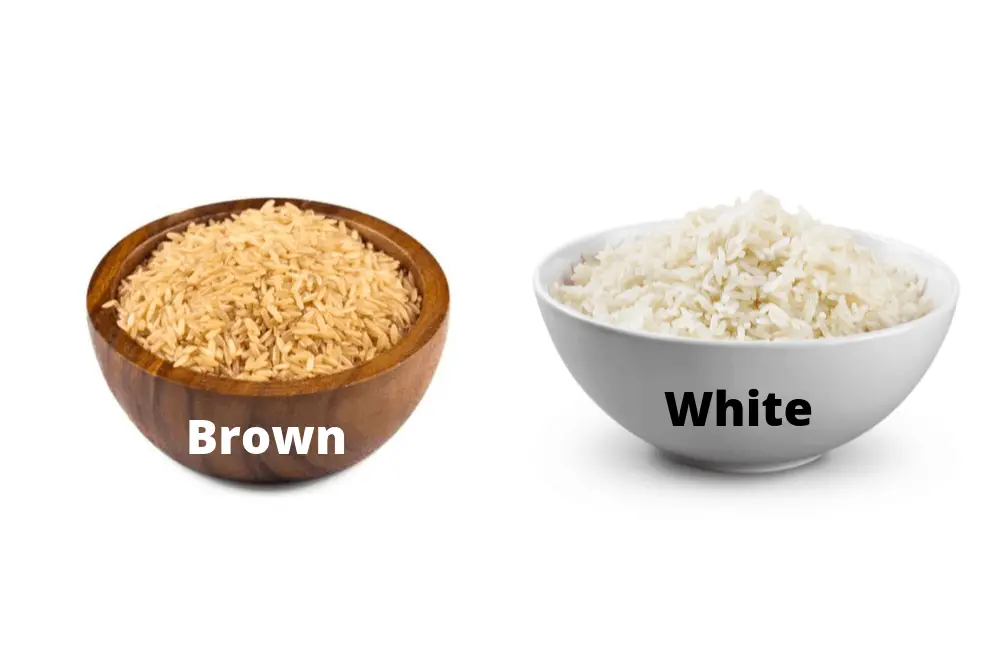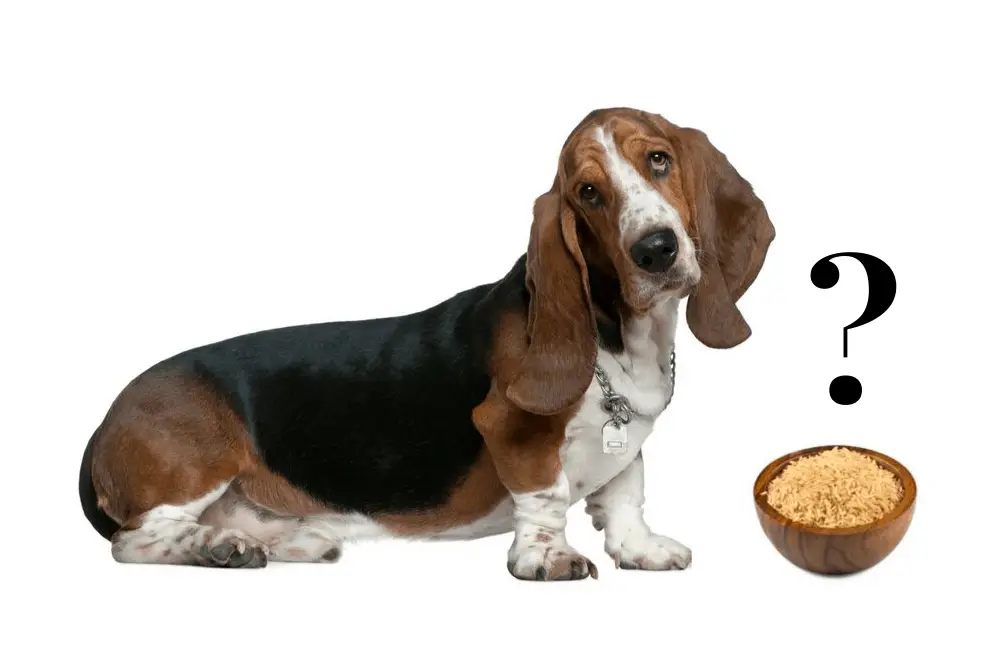Brown rice is often considered an important food staple for humans and most pets alike.
Can Dogs Eat Brown Rice?
Dogs can eat brown rice sparingly in small amounts. Brown rice is full of natural fiber. You don’t want to give too much brown rice too often as the added fiber can cause digestive upset and diarrhea in your dog.
Brown rice is so much better than the average processed white rice because it has many perks:
- It features some proper nutrients- magnesium, phosphorus, selenium, thiamine, niacin, vitamin B6, manganese, and it is rich in dietary fibers.
- It can also help dogs (and humans who eat it) absorb other essential nutrients and regulate their metabolism more seamlessly.
If you are reading this article, you are probably looking for a great carb alternative for your dog’s diet.
You might be asking yourself a question:
Can your four-legged companion eat brown rice or other unrefined grains?
More importantly, should they?
Keep reading to learn more.
Most people have the common misconception that dogs are carnivore creatures.
The truth is that dogs aren’t strict carnivores, like cats, who are “obligate carnivores.”
In fact, they are a lot more similar to us than you might think, in terms of their diet needs. Dogs are indeed omnivores, and they benefit from a diverse diet.
In other words, different types of food can keep your dog healthy and improve their lifestyle.
Brown rice is often discussed as a source of food for dogs. It is relatively inexpensive, filling, and rich in carbs and fibers, which might be beneficial for your pet.
If you are unsure whether you should allow your dog to eat brown rice, you probably might already be doing so without even knowing it!
Many commercial dog food brands use brown rice as a filler or as an ingredient in their recipes and formulas.
Dogs can eat grains such as brown rice, and they can digest a lot of plant-based foods, even though their diets must include some meat protein as well.
Brown Rice In Commercial Dog Food Products And Kibble.

There is a huge range of dog-related food products on the market, covering different budget options and dietary needs.
Because of its unique properties, brown rice often appears in the ingredient list in many food products for dogs, albeit in different proportions.
While some cheaper brands might provide lower quality grain fillers, brown rice is often considered a much better choice.
At times, it even appears in higher-end food items for canines, highlighting its status as an excellent carb source.
A relative percentage of brown rice as a component of a meal can bring a healthy supplement of vitamins, like D and B, which can help your canine’s heart health.
A Much Better Carbohydrate Option.

As mentioned earlier, some people view dogs as carnivore animals. On the other hand, carbohydrates are not only optional but essential for dogs to be healthy.
Dogs can consume carbohydrates, but they might struggle to digest heavily processed grains or gluten.
However, brown rice is quite easy to digest for dogs because it is relatively unprocessed when compared to other grains.
As opposed to other, more processed carb sources, brown rice also provides a higher intake of minerals and nutrients, which might be beneficial to the canine gut.
Some modern kibbles, especially cheaper products, feature an excessive amount of low-quality carbohydrates.
Frequently, these ingredients are readily available and cheaper to mass-manufacture.
However, it is important to make sure that any dog food you purchase doesn’t exceed 10 to 20 percent in carbs to protein and fat ratio, at the most.
The problem is that in some countries, dog food producers and manufacturers do not have to disclose the percentage of carbs in their products.
For this reason, it is difficult to determine what to choose. You’ll have more control over the quality of your dog’s diet if you go the extra mile and take the time to prepare meals for your dog.
Watch Those Calories And Portion Sizes!
It’s important to understand that although brown rice is quite nutritious, it is still relatively high in calories when compared to the daily needs of dogs.
As a rule of thumb, it is a good habit to make sure that no more than 10% of your dog’s calorie intake comes from brown rice or other grains.
In the correct proportions, brown rice can be extremely beneficial. But, it’s important to watch the portion sizes, as calories can add up pretty quickly, especially because most dogs tend to overeat.
All The Good Vitamins.

Brown rice is an excellent source of vitamins. In particular, it features notable quantities of vitamin D and B, which are essential for your canine’s heart health.
Vitamin D is particularly important because it enables the dog’s intestine to absorb many other important nutrients, such as calcium, and magnesium, among others.
Vitamins in the B group are also very complex, and they are important to regulate metabolism and other factors contributing to a healthier routine for your dog.
How Should You Prepare Brown Rice For Your Dog?
The simplest, and best way to prepare brown rice for your dog is to boil it in a pot or rice cooker, just as you would with any rice dish.
However, it is important to consider a few precautions:
- Never add extra salt, spices or seasonings to the rice. Adding salt and other condiments can be bad for your dog, due to the high sodium content of these products.
- Never add butter, ghee, margarine, or oil to the rice. Besides enhancing the calorie count of the rice, they might make the meal more difficult to digest for canines, who don’t digest dairy products as well as we do.
- It might be obvious, but never give your dog raw rice!
- Make sure that the rice is not piping hot when you serve it. It can be lukewarm or at room temperature. In much the same way, try to avoid serving fridge-cold rice (or any other food) because some dogs might find it unappealing and harder to eat or taste.
Is Brown Rice A Remedy For Dogs With An Upset Stomach?
Some people claim that eating brown rice is an excellent remedy for dogs who have an upset stomach, and there is some truth to the claim.
Eating a plain meal can be a good alternative if your dog is feeling queasy. Rice is quite easy to digest, and int contains many minerals and fibers, which might help combat GI used in dogs.
The best approach is to combine some cooked rice with some lean meat (like ground beef without too much fat content, or even chicken). Such meals could also be effective to reduce diarrhea.
While trying out this diet is safe and not harmful for your pet, it is highly recommended to consult your trusted veterinarian, so you can get an expert’s opinion and further guidance.
Brown Rice Versus White Rice

White rice is often very processed, and it is quite inexpensive.
However, even though it is quite common, traditional white rice varieties have been stripped of a big part of their nutritional value because some of the most beneficial portions of the ingredient have been removed.
Because white rice is less nutritious, dogs can digest it a lot quicker. While this might sound like a good thing on paper, quick digestion of white rice can cause spikes in the dog’s blood sugar level.
Conversely, brown rice is packed with helpful nutrients, and therefore, it requires longer digestion times for all the nutrients to assimilate.
This is a better option, because it heightens your dog’s diet’s protein content, as well as lowering the fat count by a significant margin.
Although brown rice is often considered a better option, white rice is far from being dangerous. In fact, it can be an acceptable alternative, and it can make for an occasional meal option.
Are Dogs Allergic To Rice?
Some dogs are actually allergic to rice, although this is a very rare occurrence.
If you experience your dog having symptoms such as itchiness, as well as ear infection and hair loss, these could be signs of an allergy to rise, and/or other food sources.
Don’t take any wild guess, and consult your trusted veterinarian for proper testing!
Conclusions And Final Observations.
In conclusion, dogs can most definitely eat brown rice, and they probably should eat it!
Brown rice and other similar unrefined grains are a really good source of carbs for dogs, and they also contain many other nutrients, such as fibers, as well as a host of minerals, and some protein.
Brown rice can ultimately be a fantastic addition to a healthy and balanced diet in any dog’s life, provided that you watch portion sizes and balance brown rice with other nutritious ingredients.
Low-carb and no-grain diets are becoming extremely popular, not only for dogs but also for us humans!
However, cutting out these ingredients, cold turkey could be a mistake. Products such as brown rice can be a very important nutritional source for humans and dogs alike, and they should not be just seen as low-quality filler.
There is also a misconception that grain-free dog foods are low in carbs,when in fact, they often feature pretty high carb counts, depending on which ingredient is supplementing the grain component.
Some dogs, especially those with allergies, should probably go grain-free. It is actually best to consult your vet before you decide to cut grains such as brown rice out of your dog’s life for good or you should keep them as a healthy routine ingredient in your dog’s meals.
*More Dog Nutrition Questions Below:

